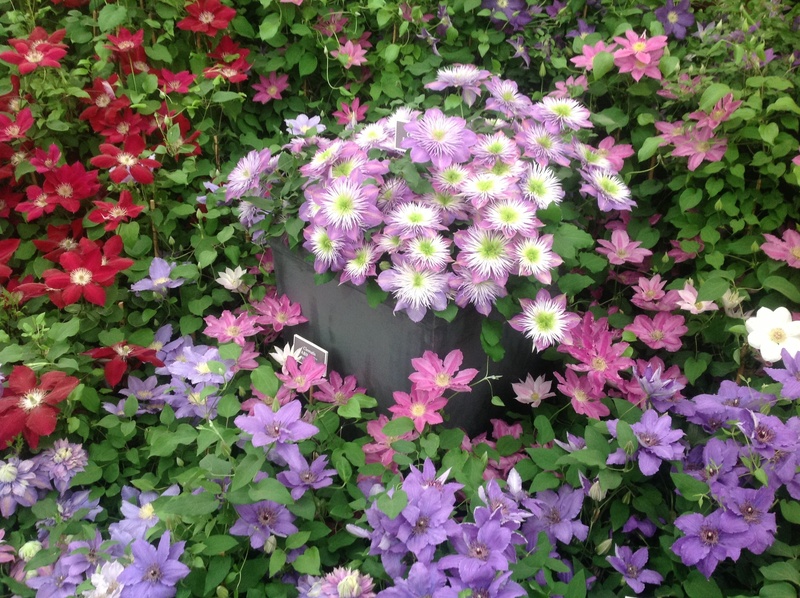Crafting a Herb Garden that Heals and Nourishes
Posted on 24/05/2025
Crafting a Herb Garden that Heals and Nourishes: Your Comprehensive Guide
A home herb garden can do more than add flavor to your meals--it can nurture your well-being and become a sanctuary of sustainability. Wondering how to cultivate a garden that not only heals but also nourishes your body, mind, and spirit? Read on to learn everything you need to embark on your healing and nourishing herb garden journey!

Why Create a Healing and Nourishing Herb Garden?
Establishing a herbal garden at home goes far beyond aesthetics. Here's why investing time and energy into this sustainable project is worth every effort:
- Boosts Your Health: Many herbs have medicinal properties that can support your immune system, reduce inflammation, and soothe common ailments.
- Elevates Culinary Creations: Fresh herbs turn ordinary dishes into culinary masterpieces, providing both flavor and nutrition.
- Reduces Your Carbon Footprint: Growing your own herbs means fewer plastic-wrapped store-bought bunches and transport emissions.
- Supports Mental Well-being: Gardening has been shown to lower stress levels and promote a sense of peace and accomplishment.
- Adds Greenery and Fragrance: A lush, aromatic herb garden enhances the ambiance of any space, indoors or out.
Planning Your Healing and Nourishing Herb Garden
Choosing the Right Location
The success of your herb garden hinges on picking the best spot. Most culinary and medicinal herbs require:
- Sunlight: At least six hours of direct sunlight daily.
- Good drainage: Raised beds, pots, or well-tilled ground prevent waterlogging.
- Accessibility: Place your garden near your kitchen for easy access during cooking or when you need a healing remedy.
If outdoor space is limited, consider window boxes or balcony planters. Many herbs thrive indoors on sunny windowsills, so small apartments are no barrier to your herb dreams!
Selecting the Best Medicinal and Nourishing Herbs
Maximize your garden's healing and nutritional value by choosing herbs that support your health and culinary needs. Some top contenders include:
- Basil: Anti-inflammatory, rich in antioxidants, perfect for salads and sauces.
- Mint: Aids digestion, relieves headaches, and refreshes drinks and desserts.
- Thyme: Offers antibacterial properties and adds hearty flavor to meals.
- Lavender: Promotes calm, heals minor burns, and infuses teas and desserts with aroma.
- Rosemary: Stimulates memory, supports circulation, and transforms roast dishes.
- Sage: Eases sore throats, boosts cognitive health, and flavors stuffings and sausages.
- Parsley: Detoxifies, supplies vitamin C, and brightens up any plate.
- Echinacea: Well-known immune system booster and powerful healer.
- Lemon Balm: Calms anxiety and creates delicious herbal teas.
- Chamomile: Soothes nerves, improves sleep, and enhances herbal infusions.
Start with easy-to-grow herbs suited to your climate, then expand as you gain confidence.
Designing Your Herb Garden for Health and Harmony
Whether you prefer classic rows, a rustic cottage-style mix, or a formal spiral, design your healing herb garden for aesthetics and utility:
- Group by Water Needs: Plant herbs with similar requirements together.
- Layer Heights: Place taller varieties like fennel at the back and low-growers like thyme at the front.
- Consider Containers: Use decorative pots for invasive species like mint to keep them under control.
- Incorporate Companion Planting: Combine herbs that benefit each other, such as basil and tomatoes or rosemary and beans.
- Pathways and Access: Include stepping stones or paths for easy harvesting and maintenance.
Establishing and Growing Your Herbal Sanctuary
Preparing the Soil
Healthy, organic soil is the backbone of a thriving nourishing herb garden. Enrich your beds or containers with:
- Compost: Supplies essential nutrients and improves structure.
- Organic matter: Mulch or leaf mold helps retain moisture and control temperature.
- Well-draining mediums: Mix in sand for clay-heavy soils to prevent root rot.
For containers, a high-quality organic potting mix is ideal. Herbs generally dislike soggy conditions--ensure good drainage!
Sowing and Planting Herbs
Herbs for a healing garden can be started from seeds or purchased as young plants (seedlings). Consider:
- Direct Sowing: Some, like dill and cilantro, thrive when sown directly into prepared soil.
- Transplanting Seedlings: Basil, thyme, and oregano are ideal for starting indoors then moving outside.
- Spacing: Allow ample room for airflow, which helps prevent disease.
Watering and Mulching
Most culinary and medicinal herbs prefer their soil slightly on the dry side. Water deeply but infrequently, and mulch with:
- Straw, bark, or cocoa hulls: Keep roots cool and weeds at bay.
- Stone mulch: Especially good for Mediterranean herbs like lavender, rosemary, and sage.
Ongoing Care--for a Bountiful, Thriving Herb Garden
- Fertilize organically: Use compost tea, fish emulsion, or slow-release organic pellets.
- Pest management: Encourage beneficial insects, hand-pick pests, or use gentle soap sprays.
- Regular pruning: Pinch or snip herbs regularly to encourage bushy, robust growth--harvesting often helps!
- Watch for signs of over or under-watering: Yellowing leaves or drooping may signal issues.
Healing Benefits of Popular Herbs
Let's explore a few transformative herbs every healing and nourishing garden should include:
Basil--The King of Herbs
Not just a kitchen staple, basil is revered for its anti-inflammatory and antioxidant properties. It strengthens immunity, soothes stress, and is packed with vitamin K, iron, and calcium. Snip fresh leaves for teas or salads, or use in homemade herbal remedies for skin irritations.
Mint--Nature's Digestive Aid
Mint cools, calms, and soothes--from easing indigestion and headaches to adding zest to beverages. A cup of fresh mint tea can relieve nausea and boost alertness. Mint grows vigorously and can be used in everything from sauces to desserts.
Lavender--Calming and Restorative
Famed for its soothing fragrance and lovely purple blossoms, lavender is a staple of every healing herb garden. Whether used in herbal teas to encourage rest or as an essential oil for anxiety relief, growing lavender delivers beauty, therapy, and pollinator support.
Rosemary and Thyme--Memory, Strength, and Immunity
Both rosemary and thyme are rich in antimicrobial and antioxidant compounds. Rosemary enhances mental clarity and blood flow, while thyme fortifies immune health and relieves coughs. These hardy perennials add savor to roasts, stews, and vegetables with just a snip.
Chamomile--Nature's Sleep Aid
Widely used for bedtime teas, chamomile calms nerves, aids sleep, and can be applied externally to calm irritated skin. A handful of blooms not only yields a soothing drink but also attracts beneficial insects to your garden.
How to Use Your Healing and Nourishing Herbs
Herbs as Food
Fresh, homegrown herbs elevate every meal. Toss chopped herbs into salads, blend them into pestos, infuse oils and vinegars, or sprinkle on roasted vegetables. Adding herbs at the end of cooking preserves their unique flavor and medicinal compounds.
Preparing Teas and Tinctures
Create simple herbal remedies with these steps:
- Herbal Teas (Infusions): Steep a handful of freshly picked leaves or flowers (such as chamomile, basil, or mint) in hot water for 5-10 minutes, then strain and sip.
- Tinctures: Soak herbs like echinacea or lemon balm in alcohol or glycerin for several weeks; strain for a concentrated extract.
- Salves and Poultices: Combine dried herbs with oil or water to treat minor wounds, bites, or inflammation.
Dried Herbal Remedies
Harvest surplus herbs and dry them for year-round wellness. Bundle and hang herbs upside down, or use a dehydrator. Store in airtight containers for teas, soups, or DIY potpourri.
Essential Tips for Year-Round Success
- Keep harvesting: Frequent snipping encourages healthy, bushy plants and prolongs production.
- Rotate and refresh: Every 2-3 years, rotate perennials to optimize soil health.
- Record your experiences: Keep a garden journal to track what thrives, what struggles, and note your favorite remedies and recipes.
- Get the family involved: Gardening is an ideal hands-on way to teach children about healing plants and sustainability.
Nourishing the Mind, Body, and Spirit with Your Herbal Garden
A medicinal herb garden doesn't just serve the body--it's a balm for the mind and soul. Gardening connects you to the rhythms of nature and offers simple joys: the scent of crushed mint, the hum of bees among chamomile, or the satisfaction of whipping up a fresh pesto.
Start small, experiment with different herb varieties, and savor the process. Even the tiniest balcony or windowsill can yield a bounty of healing and flavor.

Common Questions about Healing and Nourishing Herb Gardens
What are the easiest medicinal herbs for beginners?
Easiest are basil, mint, chives, parsley, sage, thyme, and oregano. All are tolerant, fast-growing, and offer medicinal and culinary value.
Can I grow healing herbs indoors?
Absolutely! Herb gardening indoors is possible on sunny windowsills or with the help of grow lights for cloudy climates.
How do I keep my herbal garden healthy without chemicals?
Focus on healthy soil, companion planting, regular harvesting, and natural remedies like neem oil, insecticidal soap, or hand-picking pests.
Final Thoughts: Cultivating a Herb Garden that Heals and Nourishes
With a bit of planning and care, your healing and nourishing herb garden will be a source of vibrant health, culinary delight, and soulful connection. Whether you have sprawling plots, raised beds, or a sunny countertop, you can grow herbs that restore, revitalize, and rejuvenate.
Begin your journey to wellness and flavor today--craft a healing and nourishing herb garden and reap the benefits all year round!

